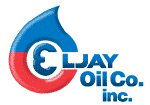Making the Transition to Synthetics

In 2023, we announced significant changes to the Chevron Delo® line of heavy duty engine oil products. Specifically, we are simplifying our product portfolio from four categories to two, phasing out our conventional oils, and focusing on top-tier synthetic and synthetic blend, or “synblend” oils.
We took this step for a number of reasons. First, many customers have told us that having too many choices can be confusing, especially for the driver who is buying at retail or online. By simplifying our product line, we can simplify the selection process for the customer. Second, we are definitely seeing a trend toward wider acceptance and use of synthetics and synblends among heavy duty fleets and owner/operators. We believe they are the way of the future. And third, we believe that synthetics and synblends have a number of performance characteristics that will deliver significant benefits for our customers. To cite one notable example, synthetics have a more stable viscosity index, meaning they hold their viscosity over a wider temperature range. To put another way, they are less susceptible to changes in thickness due to extreme hot or cold climate conditions.
Yes, synthetics cost more than conventional oils, but we believe that cost can be offset by savings from increased fuel efficiency, longer drain intervals, longer oil life, and longer engine life with less maintenance downtime.
Our move to synthetics also coincides with some significant changes in the industry. Heavy duty OEMs are preparing for tighter NOx emission standards coming in 2027. Truck manufacturers are making advances with new engine technologies, including natural gas, battery electric, hydrogen fuel cell and hydrogen ICE. So, we always have to be thinking ahead and evolving our products to adapt to a changing landscape.
Having said all that, we still get quite a few questions about synthetics. A big one is: can I start using a synthetic in an older piece of equipment that has always used a conventional oil? The answer is yes. Today’s synthetics are backwards compatible with older engines and there is no need for a break-in period. This is especially important for fleets that have a mix of older and newer trucks, and don’t want to stock a lot of different oils for different engines. It’s also true for both on-highway and off-highway users. The off-highway segment is less concerned with emission controls, but operators tend to keep their equipment in service longer. They too can benefit from the trend toward synthetics, especially in severe operating conditions.
Another common question: can a synthetic or synblend really deliver the level of engine protection that I’m accustomed to with conventional oils? Again, the answer is yes, and this has been proven over time. The synthetic trend is actually an extension of a trend toward lower viscosity oils that began over a decade ago, when OEMs began to transition their factory fills to lower weights. Operators were hesitant at first to move to thinner oils, but as they began to see the fuel economy benefits, they became more comfortable with the idea, and the transition to synthetics became easier to make. Heavy duty synthetic products have been on the market and proven on the road for several years now.
The key takeaway is that you can confidently replace your conventional Delo oil with one of our synthetics with no compromise in protection or performance. Our labels will explicitly spell out the optimal synthetic replacement for your existing oil.
So what is the difference between full synthetics and synblends? As the name suggests, a synthetic blend is formulated from a combination of synthetic and mineral base oil stock. It delivers the benefits of a synthetic oil, but is priced closer to a conventional oil. Synblends are frequently chosen by operators who are just starting the transition away from conventional oils.
Have more questions? Don’t hesitate to reach out and ask. We are always looking farther down the road and ready to help our customers navigate an industry that is always changing.
